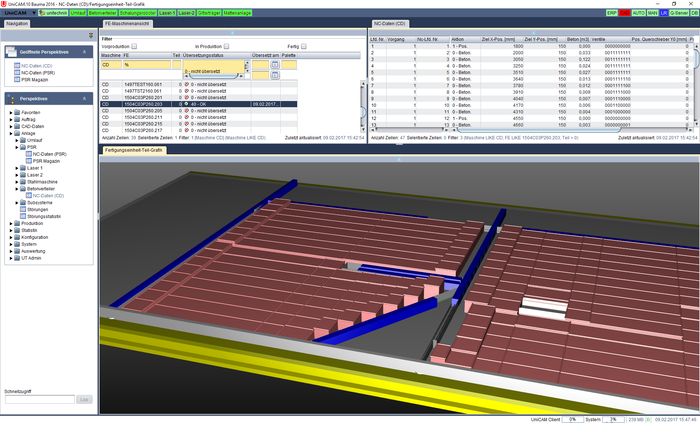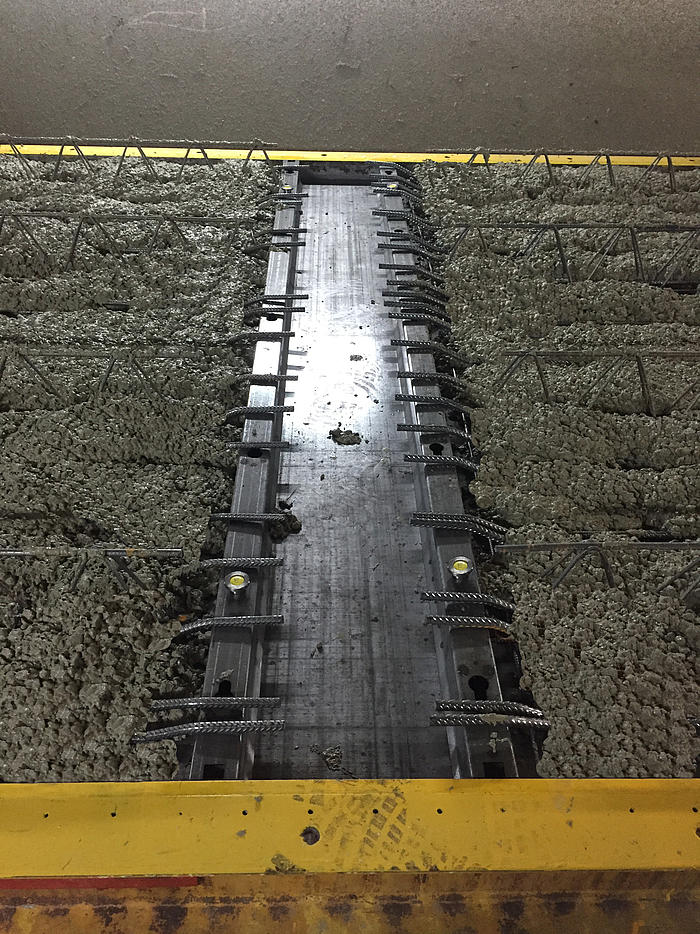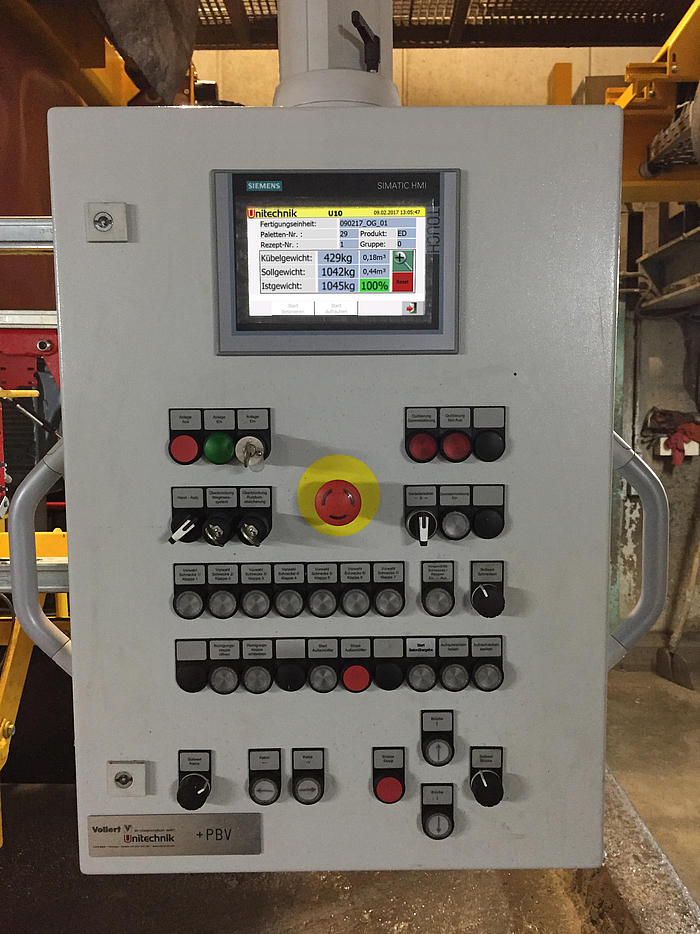Many companies still rely on manual processes in concrete distribution. The reasons: difficult dosing of the material and automated pouring of concrete frequently yields unsatisfactory results. Yet the consumption of concrete can be reduced with automated systems and cycle times can also be reduced. UniCAM.10, the master computer by Unitechnik specifically for precast concrete plants, now allows the improved utilization of the automated concrete distributors. The software, based on a new algorithm, creates a spatial image of the necessary concrete output in an area. This serves as a template for the concrete distributor so that the desired layer thicknesses can be met. This reduces production cycle times.
Concrete is the most expensive purchase in the production of precast slabs and double walls. A wasteful handling of this resource therefore quickly leads to high production costs: if, for example, a precast slab with a concrete thickness of 60 mm is sold but a thickness of 63 mm is produced, the costs for concrete increase by 5%. Companies must therefore ensure that only the volume of concrete that is sold is in fact processed. And this must be applied at a consistently even thickness in order to create a homogeneous layer. With automated concrete pouring this was, until now, possible only with manual corrections. The reasons for this are, among other things, the difficulty of dosing fresh concrete and the frequently unsatisfactory results when pouring concrete on slopes. Several passages of the concrete distributor across an element are also a daily occurrence - which causes prolonged cycle times in production. With a new algorithm for the master computer UniCAM.10, Unitechnik now offers the opportunity of significantly improving the results of automated concrete pouring. Manual corrections are now hardly needed. The software can also easily be integrated into existing machines.
Virtual image optimizes the production result
The new process is designed so that the automated concrete distributor passes formwork, cut-outs, and mounting frames at a specified distance. A bead is poured next to these to even out the missing concrete on the edges. The excess concrete then flows into the gap during compacting and thus ensures an even layer thickness of the complete element. For the technical implementation, the Unitechnik master computer UniCAM.10 first creates a spatial image of the necessary concrete output. It considers the features of the concrete distributor, e.g. output width, number of augers or valves, as well as concrete consistency. The algorithm then calculates optimum movement strategies, edge distances and bead heights, and transmits the parameters to the concrete distributor. With a skillful use of augers or valves, the machine then pours the concrete pursuant to the three-dimensional model. With this technology, even sloped elements can be concreted automatically. To accomplish this, the concrete bead is placed parallel to the slope to allow the correct volume of concrete to move to the tip of the element.
Minimal concrete consumption
With the new distribution algorithm, your company can optimize the movement strategies of your machines to reduce the cycle times of your system. The master computer also guarantees that the correct volume of concrete is consistently applied. The actual consumption of material is determined continuously through weighing cells on the concrete distributor and is reported to the software. Users profit from a high level of transparency for their utilized resources and can optimize their production costs.



